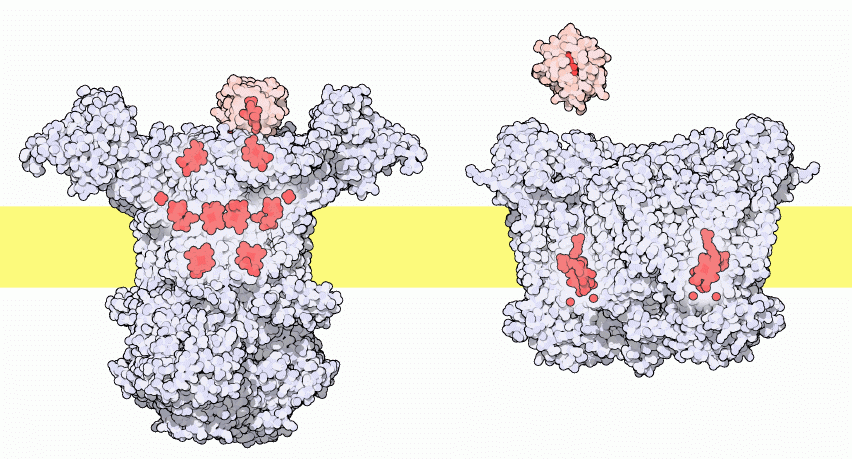|
Inhaltsübersicht | Nanomaschinen | Moleküle | Programme | Kurse | Fun | Links |
||
| > |
Cytochrome C
Cellular Circuits
Cytochrome c forms one connection in a hard-wired cellular electronic circuit. It transfers electrons at the last step in the production of cellular energy. These electrons are originally obtained through the breakdown of sugar, and end up being attached to oxygen to form water (this is the ultimate fate of the oxygen that we breathe). Cytochrome c transfers individual electrons between two large protein complexes, gathering electrons from cytochrome bc1 complex, shown on the left from PDB entry 1kyo, and delivering them to cytochrome oxidase complex, shown on the right from PDB entry 1oco (see also the Molecule of the Month for May 2000). These two complexes perform the heavy work of energy production. As electrons flow through their electron-carrying groups, shown in red, they pump protons across a membrane, shown schematically as the yellow stripe. These protons are then used to power production of ATP. Cytochrome c keeps the entire engine running smoothly, shuttling electrons from one complex to the other as needed.
Next: Exploring the Structure
Previous: Cytochrome c

Last changed by: A.Honegger,